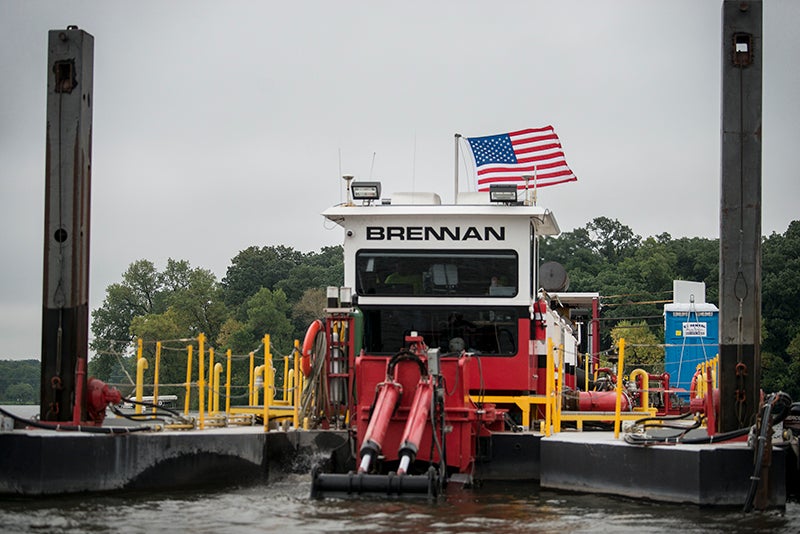Watershed District officials highlight need for Bancroft Bay dredging
Published 6:42 am Friday, July 26, 2024

- Dredging started in summer 2018 on Fountain Lake’s Edgewater Bay under the direction of dredging and marine construction company J.F. Brennan. - Colleen Harrison/Albert Lea Tribune
|
Getting your Trinity Audio player ready...
|
Shell Rock River Watershed District leaders laid out their case for dredging Bancroft Bay on Thursday in a community meeting and urged residents to contact state Department of Natural Resources officials to emphasize the importance of the project locally.
The meeting took place as the district seeks to obtain its permit from the DNR for its final phase of dredging for Fountain Lake, which includes the east basin of the lake’s main bay, as well as Bancroft Bay and part of the channel to it.
Watershed District Administrator Andy Henschel said Fountain Lake, which is on the state’s impaired waters list, will never be able to meet the nutrient water quality standards if internal loading of phosphorus is not completely addressed in Bancroft Bay.
He said further that they would not be able to keep the clarity that has come in the rest of the lake from dredging if the bay is not dredged. The bay has been found to have some of the highest levels of phosphorus released during conditions that favor loading of any sediment cores across the lake.
The final phase of dredging is in the works after the Legislature in 2023 approved $9 million in additional state bonding dollars for the project. The dredging in its first two phases removed about 1.26 million cubic yards of sediment.
The final phase plans to remove about 340,000 cubic yards of sediment from Bancroft Bay and about 310,000 from the main bay.
This would change the depth in Bancroft Bay from 2 feet or less in most areas to 5 or 6 feet deep in most of the dredged areas. Henschel said they completed numerous soil borings to try to determine what the natural bottom of the bay is and to determine the amount of phosphorus there. The northeast part of the bay would be deeper to catch the sediment as it comes in.
The removed sediment would be disposed of in a confined disposal facility built for a previous phase of the dredging.
Julie Blackburn, with ISG, one of the companies the district is working with on the project, said the DNR has questioned the need for the Bancroft Bay part of the project, stating it was not considered in earlier phases of dredging. Blackburn said it has always been a part of the engineering plans for the dredging project but was removed from earlier phases to meet budget requirements at that time.
The DNR has also expressed concern about the impact the project would have on Blanding’s turtles, with an unverified sighting of one in 2009. She said the district plans to implement a Blanding’s turtle avoidance plan to meet permit conditions and offer a staff observer during dredging operations. Dredging in the summer rather than the winter also reduces risk because the turtles are active and frequent upland areas.
Blackburn said previous phases of the dredging project that successfully obtained DNR permits had more recent confirmed sightings than Bancroft Bay.
The DNR has also asked for more data about the project, but Blackburn noted millions have already been spent in studies. All of the studies deemed reductions in internal phosphorus loads critical in Fountain Lake.
She said the district has embedded several mitigation measures including setbacks, varying dredge slopes and water quality monitoring as part of the project and would also work with the Sheriff’s Office to make Bancroft Bay a no-wake zone, though it will still not be conducive to a noticeable increase in motorboat traffic.
The district hopes to have the permit in hand by November so it can put the project out for bids by the beginning of 2025 and begin the project in the spring. The project would likely take two years.





